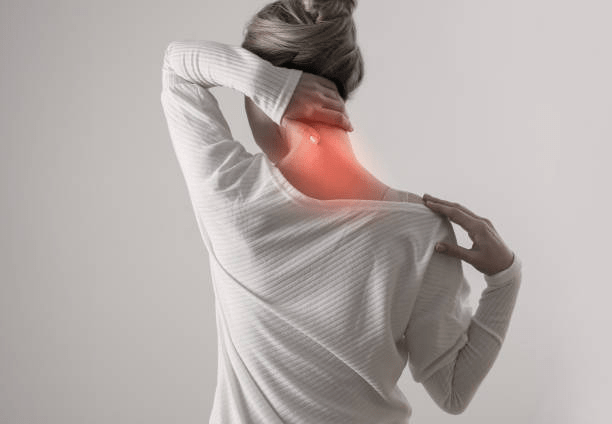
Neck pain can have several causes, the most common of which are:
- High blood pressure,
- Migraine,
- Spine problems,
- Vision problems and
- Muscle stress or tension.
Pain can be on both sides or unilateral (pain on the right or left), depending on the cause.
Neck pain and high blood pressure

Increased pressure is one of the most common causes of neck pain, although some people, even with very high blood pressure, have no symptoms at all.
As pressure levels remain high or gradually rise, the body tends to adapt to the situation, without causing pain or other complaints. Which is harmful to the person, because there is no sign of something wrong, delaying proper treatment.
Neck pain associated with high blood pressure may be accompanied by chest pain, dizziness, nausea, drowsiness, mental confusion, vomiting, pallor, hand tremors, ringing in the ear, bleeding from the nose, weakness, blurred vision, and visual changes.
What is the treatment for neck pain caused by high blood pressure?

The treatment for this hypertensive crisis phase should be to seek an emergency service, treat the problem, and avoid further complications, such as a stroke, or acute myocardial infarction.
After the hypertension crisis is resolved, treatment should be directed to the cause of the problem, that is, the best control of blood pressure.
Arterial hypertension has no cure, but it has an effective treatment, which must be done without interruption and throughout life, to avoid cardiovascular, neurological, and or renal complications.
ALSO READ: 7 tips to relieve stress at any time of the day!
Some measures for the treatment and control of high blood pressure include:
- Do not smoke;
- Maintain a healthy diet with fruits, vegetables, and fibers, avoiding industrialized, fatty, and high-calorie foods;
- Maintain the appropriate weight at the height;
- Reduce the intake of salt and alcoholic beverages;
- Practice regular physical activities, 30 minutes daily, 5 days a week, with medical advice;
- Always take medication for hypertension, even when the pressure is good, unless the cardiologist changes it;
- Try to reduce the level of stress, changing life habits and with the help of activities or techniques for that purpose;
- Perform slow breathing technique, with 10 breaths per minute for 15 minutes a day.
Neck pain and migraine

Neck pain associated with migraine is characterized by unilateral, throbbing, or stinging pain, accompanied by nausea, vomiting, dizziness, photophobia (worsening of pain with light), and or photophobia (worsening of pain with noise).
What is the treatment for neck pain caused by migraines?

The treatment of the pain crisis should be done with strong analgesics and anti-inflammatory drugs and remaining at rest and in dark environments.
However, knowing that migraine has no cure, it is essential to assess and monitor it by a neurologist, who may indicate the best maintenance treatment, case by case.
Neck pain and back problems

Spinal diseases such as scoliosis, kyphosis, herniated disc, and degenerative diseases, often cause tension in the neck muscles.
In these cases, the pain worsens with movement and palpation and improves with rest and pain medications. It can be located only on the nape of the neck, or radiate to one of the arms, with a “shock” type of pain, in cases of herniated discs, due to the nerve root’s compression.
What is the treatment for neck pain caused by back problems?

Treatment should be conservative initially, with the use of anti-inflammatory drugs and or muscle relaxants. And more rarely, in cases that do not respond, or with more severe signs and neurological changes, surgery may be indicated to correct the problem.
What is the treatment for neck pain caused by muscle tension?

The treatment of neck pain caused by muscle tension is based on correcting posture, performing physical exercises appropriate to the problem, reducing stress, and using analgesics and muscle relaxants.
It can also be a symptom of neurological disease, such as meningitis. In this case, it usually appears with other signs and symptoms such as neck stiffness, nausea, vomiting, and fever. It is a serious and life-threatening illness, so if you suspect meningitis, seek an emergency immediately.
The general practitioner or family doctor can diagnose and guide treatment for neck pain.
